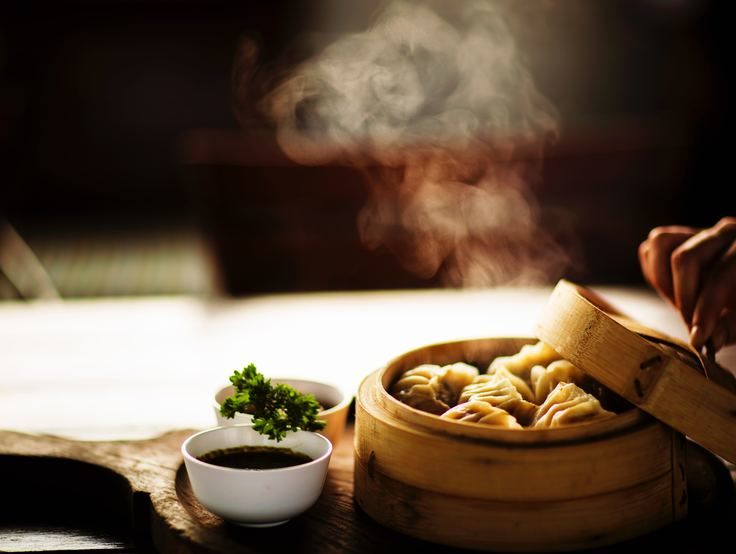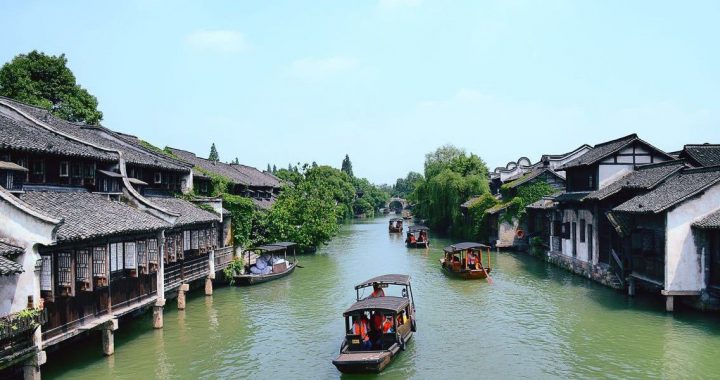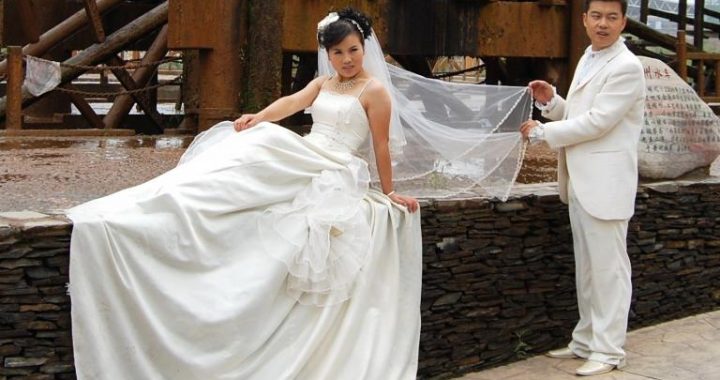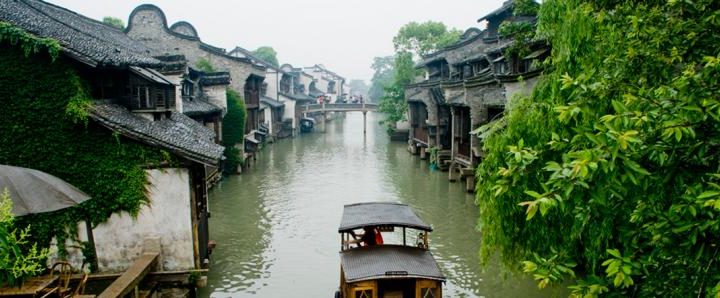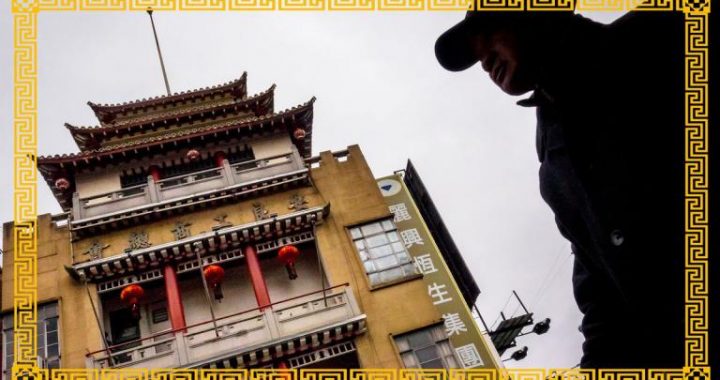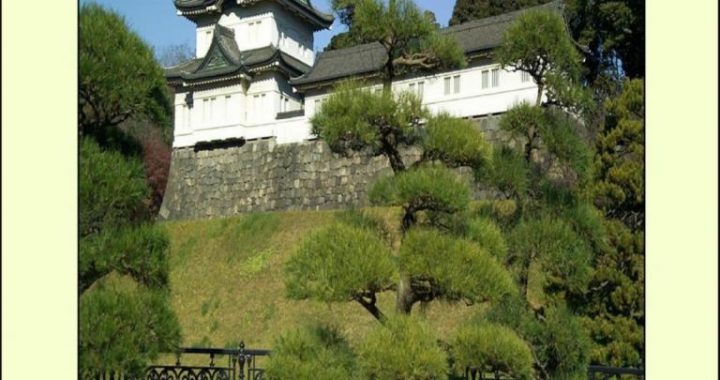A Taste of Wuzhen for Food in the Middle Kingdom
30 min readA search in the Cambridge University library reveals dozens of books on ACe e food. Most make clear how food reflects the country’s regional cultures.A similar search for books on English food provides thin gruel.
Essentially English literati do not write about their own food. Invite a friend in China across the domestic threshold and the first phrase, up to the twenty-first century at least, was ni chi le ma, meaning have you eaten?’. Originally this salutation must have implied a genuine invitation to eat if the traveller was unfed and hungry. Presumably in times past a negative answer to the greeting ofwelcome would have led to the offering of a meal. This reference to food is the traditional and universal Chinese greeting when welcomed into anyone’s home.
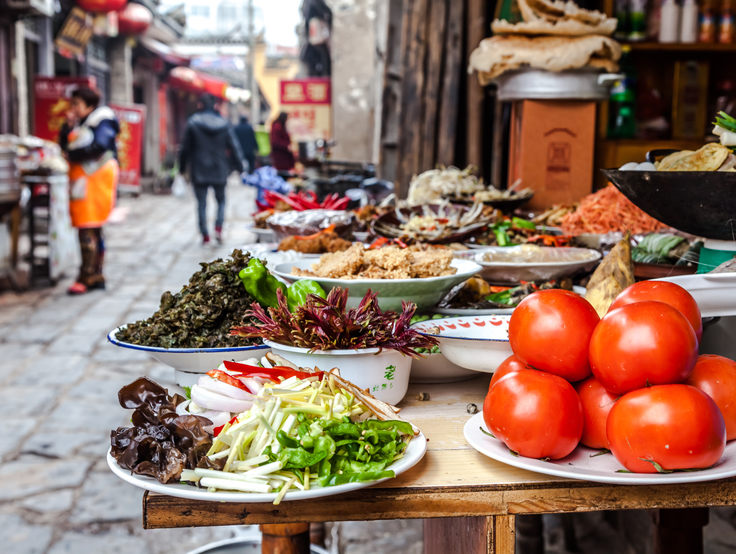
A telephone conversation by a young Chinese from the east coast to an ancient grandmother in the rural interior might still start with the same phrase.
It often leads on to a detailed exchange of recent gastronomic experience. This would rarely happen in England. The English talk instead incessantly about their weather. The phrase ‘ You are what you eat’, originating from nineteenth-century Germany, is known in England but educating people to understand the consequences of their eating habits is still a diffcult challenge. For centuries the phrase in China has been a statement of the obvious, which may explain why there is no equivalent expression. Its Chinese equivalent is most likely to be used by a militant vegetarian to suggest that the consumer of pork will be turned into a pig. Food is central to Chinese culture in a way Europeans, and most certainly the English, find difficult to comprehend.
Everywhere in China is found the view that food is intimately related to health. The only other activity besides eating food which is remotely as important for survival of the human race is sex. The Chinese evidentlyacknowledge these facts where the English do not. Food not only gives gi, energy, but is also a vital means to maintain yin and yang. Gluttony, for which word there is not a single word translation in Chinese, was an offence of such proportions that it could lead to luan, or chaos, and threaten a dynasty’s survival. Bao yin bao shi,a phrase suggesting unreasonable indulgence, is merely a phrase describing the act of excessive eating; it does not carry the baggage which gluttony does in the West.
Emperor Chen Shubao of the Chen dynasty, the last of the Southern Dynasties, died in 604 from such excess, although to his credit his gluttony was tempered by an interest in literature and women. Confucius taught that frugality,a necessity for the peasant, must be a virtue for the rich. Enjoyment of food to the Chinese had an obvious sensual dimension, which if carried to excess could deprave. The classic novel The Plum in the Golden Vase, or Jin PingMei, by Lanling Xiaoxiao Sheng in the late sixteenth century explicitly depicts food as the counterpart to sex. The experience of food leads to the experience of sex. Food and sex lead to self-realisation. Such bi-sensuality in literature is rare in other cultures. The European equivalent in sensuality is perhaps Lolita or Fanny Hill, but in those novels food plays a small role. Perhaps it is no coincidence that a European country which loves its cuisine, France, should have provided such novels as Rabelais’s Gargantua and Pantagruel or Zola’s Le Ventre de Paris. Both place food in a central position. It is difficult to find their English equivalent.
Frugality as regards food is a virtue which President Xi thought has been lost by the Chinese officials. In 2013 extravagant official banquets which could feature up to ten dishes were forbidden. Henceforth only three dishes and a soup must suffice. The number ten featured again as the children of party officials can only invite the number of guests to a wedding feast who can fit around ten tables. The very strap-line of the campaign against corruption and excess consumption contained a word often related to food: it was Xi Jinping’s’ Frugality and Anti-Corruption’ drive. Only in China could a reference to food be enlisted as a weapon against wrong-doing.
The central place of food to the Chinese is even bolstered through religion.
Buddhism, which claims quite a large number of the population as followers, teaches that being at peace with the world starts through diet. This is why the various food scandals, from arsenic in rice, deadly baby-powder, soya made from human hair, pesticide residue on vegetables, adulterated noodles or fake lamb meat, do more to undermine the legitimacy of the government regime than any political opponent can achieve.
It seems natural therefore that public concern over the use of genetically modified crops is higher than in many parts of the West. Criticism floods Chinese social media platforms. Opposition is surprisingly open, transcending traditional lines of political protest. In 1992,8,000 years after archaeologists uncovered evidence of domestically grown rice in the lower Yangtze valley around Wuzhen, China became the first country to introduce a trial GM crop. It has given permission to sow man-made GM food crops but it is only GM cotton that has reached wide cultivation. Everyone within the hierarchy, whatever the pressures for China to be more food self-sufficient, will understand the risks of tampering with rice. The extent of emotion involved, and the long cultural memory of the Chinese, is vividly exposed in a recent comment bya very senior member of the People’s Liberation Army. In the view of Peng Guangqian the consequences [ of GM Rice] will be far worse than what the Opium Wars wrought’. It is also interesting that in the twenty-first century references to this period of long-past appalling British behaviour are still made.
As Chinese history is long, so too is its collective cultural memory.
Food scandals can be portrayed as proof that the Immortals in the Heavens are losing faith in the emperor who occupies the Dragon Throne. The inability to prevent natural disasters such as flooding or famine, together with the inability to deal with matters such as corruption of food or of political life, has led to the downfall of more imperial dynasties than ever outright invasion achieved. Food quality, its history, and the rituals asociated with eating are central to China’s cultural consciousness. England has had food scandals, such as salmonella in eggs, mad cow disease, horse flesh in’ beef-burgers’ and e-coli in meat. Food does on occasion breach the political arena; Margaret Thatcher was never forgiven for denying free milk to young state school children in the early 1970s. Low quality of English state school dinners has been an issue in this century. However, in comparison to the impact food problems make in China, these are small diversions. Plague was frequently triggered by food. Historically China has suffered less from plague than the West. Perhaps the Chinese people understood more of the dangers, as well as the pleasures, of food. However, famine aside, food-related plagues have caused less hardship cumulatively than in the West. They have always had a greater sensitivity to food issues because of the large role food plays in their cultural identity.
There are numerous Chinese colloquial phrases relating to food, such as the rice is already cooked’, suggesting what is done cannot be undone; the English would meet this phrase without mention of food by saying the ‘ die is cast’. Eating eight big dishes’ during a Chinese banquet suggests wealth can be measured in terms of food. The English might respond this time with a food analogy through ‘a feast fit for a king. In China, through the door ofrich people comes the aroma of alcohol and meat’ signifies wealth. Sharing good news translates to share a cup of rich soup. Even Confucius paired food and love-making together. The English use of food idioms barely gets beyond revealing the truth as,’ spilling the beans’, referencing basic matters as ‘ bread and butter issues’ and a couple of phrases which refer to an apple assisting health and bacon as an allegory to a man feeding his family adequately. Food in China and its importance to their culture is unparalleled in England and arguably anywhere in the West.
Chinese food also carries a medical dimension. Food and medicine, at least of the traditional Chinese kind, share the same roots. The Chinese are more aware of the foods which are good or bad for health than are the English.
In general the advice of Hippocrates who wrote ‘ let food be thy medicine and medicine be thy food’ was not absorbed in the West. It was in China. The ideathat food is medicine is immediately recognised. This is why so many Western eating customs shock the Chinese. The American-inspired love of ice-cold drinks is thought harmful in China where water is drunk at body temperature.
Equally the vast quantities of red meat Westerners enjoy astonish the Chinese observer; according to Confucian belief cattle should be beasts of burden rather than a source of food. The Chinese respect for food in all its forms is why instinctively Traditional Chinese Medicine is preferred to the chemical Western alternatives.
Dining etiquette, only ever adopted in the past by the English upper classes, is often still followed strictly in China across all social classes. There is a place at table for the guest of honour, for the elderly and for the children, and rules as to when the chopsticks or spoon should be used. The order in which food is served is important. For example, soup comes at the beginning of the meal in the north, as it does in England. In the south soup and rice are served last to satiate the appetite. Some will also maintain the traditions thatdetermine the order in which the dishes on the table’s rotating ‘ Lazy Susan’ are arranged. Food served with bones, for example, has a different placement to dishes without bones. In place of a short Christian grace in the West, the end of which signals permission to consume the food, the Chinese traditionally say qi kuai,’ let us use chopsticks’. Chopsticks originated as a very practical eating tool; long ago the Chinese used chopsticks to dip their vegetables into a shared soup bowl, such as an ancient ding. They are ideal for this style of eating. Western visitors easily achieve an adequate mastery of chopsticks. However, their use bythe amateur Westerner can assist weight loss when in China, as the rate of food intake in comparison to the rate possible with a spoon and fork is somewhat reduced. Those dieting in the West through the ‘ portion control’ approach might consider their adoption.
Beyond the medical and ritual dimensions, food and alcohol have played a big part in the deals between both officials and businessmen. Training schools have been set up to coach students on food etiquette and, particularly relevant in the heavy drinking north, on how to decline alcohol. Many of these customs are withering before the onslaught of a new worldwide casualness towards tradition. Nonetheless the Chinese cultural memory is sufficiently strong for them still to be used on formal occasions. Dining etiquette was never as strong or rigid in the West and whatever once existed there has now virtually been lost.
One of the most significant breaks with past etiquette in China is the disregard of the convention that meals are no longer eaten in silence. Silence honoured the spirits which supplied the food. Neither did the Chinese ever indulge in the recital of graces in public before a meal, which are still beloved at Cambridge colleges or in private in the households of the religious. This English tradition at Cambridge flowed from their connection to the Churchsmonasteries. To thank their Christian Lord for food was a verbal expression of their faith. For the Chinese the consumption of food in silence was an opportunity for meditation and reflection.
Modern Chinese youth’s dislike for such ancient etiquette might have played a part behind the success in all their cities of fast food outlets such as KFC and McDonald’s. Neither of those fast food sellers have breached the walls of Wuzhen town or of the Forbidden City. Starbucks, however, managed to do so in Beijing for seven years from 2000. To the relief of visitors from many countries this coffee shop closed in 2007. However, by 2014 they operated 1,219
stores elsewhere in China, behind only those found in the US and Canada.
The impact of fast food has shocked older Chinese. For a traditionalist in any country it must be sad to observe children’s appreciation of such food. Shocked they may be but not so shocked that Chinese parents do not still offer as a reward for some minor academic triumph of their child. Increased levels of obesity are not yet quite as obvious in China as in the West but China has at least started its journey along this bleak road of bao yin bao shi excess.
The correlation of obesity with the presence of fast food outlets is striking.
Thus in the inland poorer provinces, where it is still rare to find the calorie-laden Starbucks drinks or a McDonald’s hamburger, obesity levels are low.
In the coastal cities obesity levels are around twenty per cent. Western fastfood industrial behemoths have tailored their approach to the Chinese taste; KFC still smother chicken in batter but now add soy sauce drenched bacon, mushroom, rice wraps. To the many aspects in which globalisation is bringingcultures together it would seem even diet and obesity must be included. The English estimate of obesity amongst poorer social classes now reaches fifty per cent. For the moment in China it is the middle class who are becoming obese, not the very poorest.
The people of Wuzhen would have conformed to conservative conventions of their country when dining or indeed when honouring the dead. Ancestor worship has been a dominant theme in the lives of Chinese since the earliest recorded dynasty, the Xia. It continues into the twenty-first century through food offered to the dead at funerals and on Grave Sweeping Day, the Qingming Festival in April. This important festival is even asociated with the eating of a particular food, gingtuan, during the Dragon Boat Festival. It would not occur to an Englishman to pay final respects to a loved one through food. Honouring ancestors was nonetheless important in the West. Forbidding Prayers for the Dead’ was a central tenet of the break with the Christian Catholic church at the time of the English Reformation in the mid-1500s. The Chinese emperor would never have imposed such a ruling and to imagine an emperor replacing the prayers for ancestors with prayers for himself, as the Tudor King Henry VIII did at this time, is unthinkable. Even Mao, who condemned grave sweeping as an old and superstitious practice, did not eradicate the pastime. The English proved more malleable. English Christians changed their habits of prayer at royal command and included, as they still do, prayers for their monarch as if they were some quasi-deity.
There is a wonderful poem which reaches back to the Kingdom of Chu.
When Chu absorbed its neighbour, Yue, in the mid-300s BC it brought Wuzhen under its control. The culture of Chu became the culture of Wuzhen. The town’s literati would have known the poem ‘ Da Zhao’, or The Great Summons, which addreses the soul of the dead. The poem is part of an anthology entitled Songs of the South by Qu Yuan. Written around 300 BC, it implores the soul to enjoyitself in the land of Chu, which is also the land of Wuzhen. The soul of this important ancestor is implored not to go north, south, east or west but rather toremain at the grave near its family where it would ensure their continuing good fortune. The inducement to stay is made entirely through food. It again reveals the central place of food in Chinese culture. In this instance food is thought of as the ultimate persuader.
Extract from the poem Da Zhao, The Great Summons: The five kinds of grain are beaped sic els bigh and the corn ofzizania.
Cauldrons seetbe to their brims, wafting a fragrance of well blended flavours Plump orioles, pigeons and geese, flavoured with broth of jackal’s meat.
OSoul, come back! Indulge your appetite.
Fresh turtles, succulent chicken, dresed with the sauce of Chu Pickled pork, dog cooked in bitter berbs, and ginger-flavoured mince And sour Wu salad of artemisia, not too wet or tasteles.
O soul come back! Indulge in your ouwn choice.
Roast crane next is served, steamed duck and boiled quaiks, Fried bream, stewed magpies, and green goose, broiled.
O Soul come back! Choice things are spread before you.
Even 2000 years later the food seems delicious. This marvellously evocative poem reveals not just what the richest people of Wuzhen at any time would havedesired to eat, but also the important role assigned to food. In a society where ancestors were worshipped, food was thought the best way to ensure the souls of the departed remained near their family to protect them from malign spirits.
Food has spiritual force in China.
The importance of food was reflected in the tombs of emperors. To the joy of archeologists, their graves are full of cooking utensils, dining services, the remnants of food and terracotta models of the animals they ate. At times it is known the imperial chef was forced to accompany a deceased emperor’s journey to the other world. Dealing with the possibility of promotion to a position of leadership in the imperial kitchens must have been awkward when an emperor was no longer young. The desire to appease the souls of ancestors was neither restricted to the great nor to history. Food is still offered at funerals and there are shops which specialise in selling funeral food.
Food played a part in rituals other than death. Beyond its role on Dragon Boat Day, packs of glutinous rice were prepared for those travelling up the Grand Canal to do battle with the imperial examiners. The rice was to bring luck as well as sustenance. Sticky dingsheng cakes fragrant green, cakes from rice powder called gingtuan and pickled tofu with an added description which translates as stinky were also a traditional part of the travelling student’s food pack.
Peasants of course rarely had the opportunity to sit the Imperial Examinations. Such food parcels despatched alongside the scholar up the canal would not have been their fare. Neither would the poor, the majority ofWuzhen, have had the chance to dine in the manner of the soul which the King of Chu sought to placate. They would not even have regarded rice and white flour as everyday food. Such fine fare was for special occasions or when times were particularly good. They would have been most familiar with rough foods such as corn, millet, sorghum, buckwheat, oats, yams and beans. As remains the case in modern Wuzhen, soybeans were central to the diet. Nonetheless even the limited diet of the poor embraced the rituals of Chinese culture.A lack of wealth did not preclude the consumption of Longevity Noodles tocommemorate birthdays, or the enjoyment of a Soup Noodle Banquet to mark a child’s one-month birthday.
Important lunar calendar festivals are also twinned with food. The Mid-Autumn Festival, Zhongqiu Jie, is marked by food known as mooncake to appreciate the moon. The Eighth Day of the 12th Lunar Month is celebrated through eating Laba porridge which is a concoction of red dates and chestnuts.
In Wuzhen these sorts of celebrations will often be accompanied by a special local cake, Gusao Bing, or Sister-in-Laws Cake. The name derives from a legend of how a dispute arose between two women who produced this cake. The detail of the story is not as significant as its confirmation that food and Chinese customs are deeply entwined. In the context of festivals, to balance the dozens in China, England can only muster the poor pancake and the chocolate Easter egg.
The rituals extended to alcohol, which is generally drunk less in Asia than the West. There have been three well-known distilleries in Wuzhen, the Gaogongsheng, the Shunxing, and the ongshengs only the Gaogongsheng, which claims to have been started in the 1360s, survives. Its brand of alcohol was sent as tribute to the enthronement of the first Ming emperor in nearby Nanjing before the court de-camped northwards to Beijing.
The poet Zhai You felt inspired to write the ‘ Song of Wuzhen’s Wine’ in praise of a beautiful lady of Zhejiang. During the Ming period Wuzhen was known to hold several extensive cellars. The Wine of the God of Fortune, Caishen Jiu, was invoked at the time of weddings, births, birthdays and when businesses were opened. The Chinese may generally drink less than Europeans but it still plays a role alongside food within their culture. When a Chinese child is three days old,’ Third Day Wine’, Sanzhao Jiu, is drunk for celebration; it is followed by One-Month Wine and particularly when the child reaches adulthood aged sixteen, Luoban Jiu.
Similar celebrations of course are enjoyed in the West. The difference however is that there is less ritual to determine what and when something should be consumed. The Chinese Third Day Wine has some parallel to Groaning Beer in England. In times past, it was the English women who brewed beer; these female brewers considered it helpful, in times when water was often polluted, to give the mother-to-be special beer. The leftover beer was then usedas celebration after a successful birth. Bride-ale also used to be prepared for consumption at English weddings. Groaning Beer was sometimes known as Gossiping Beer because it was brewed and drunk by women who enjoyed a good gossip at weddings and at birth celebrations. Groaning Beer is still advertised outside The Mill Pub alongside the Graduate Centre in central Cambridge.
Archaeological evidence proves soybeans were consumed almost 3000 years ago during the Western Zhou dynasty. By the Song around 900, tofu, or beancurd, had been adopted as a suitable dish for both bureaucrats and literati.
Certainly it would have been consumed in Wuzhen.
Tofu is offered in solid form or as a sauce, one of which is referred to as Liu Yue Jiang,a June sauce. Indeed Tofiu Xi Shi, the name once given to a beautiful street seller peddling tofu, has a long history in the area. In the Spring and Autumn Period before the Qin unification a beautiful princess named Xi Shifrom Wuzhen’s state of Yue was sent as to seduce the neighbouring Wu King.
She was so charming that when she looked in a pond the fish forgot to swim, so a mere King of Wu could not resist. He succumbed, neglected affairs of stateand was subsequently defeated. Tofu has long been a central part of the Wuzhen diet and its myths. Tofu, particularly the not so charmingly named Stinky Tofu made from fermented beancurd, was also a stable food in southern China. It is aptly named.
This close acquaintance with the bean led to the dominant use of vegetable oils in contrast to the Western preference for butter and animal oils. However, the biggest diversion from Western food began during the Song in the tenth century when dairy food became less and less popular. Earlier fermented mare’s milk and goat’s milk were consumed along with other dairy products. The cow remained the diet staple in the past. With no equivalent source of calcium and protein, Western people generally towered physically, if not intellectually, over their Asian relations.
Most people’s food was grown personally and processed at home. The retailing industry never had much chance to develop in Wuzhen although there was one small tea and food store there which traded for over 100 years. Its Chinese name in pinyin translated as ‘ Getting Everything Together Store’. And so retailing in Wuzhen began its journey towards the wide array of shops which now service the town’s visitors.
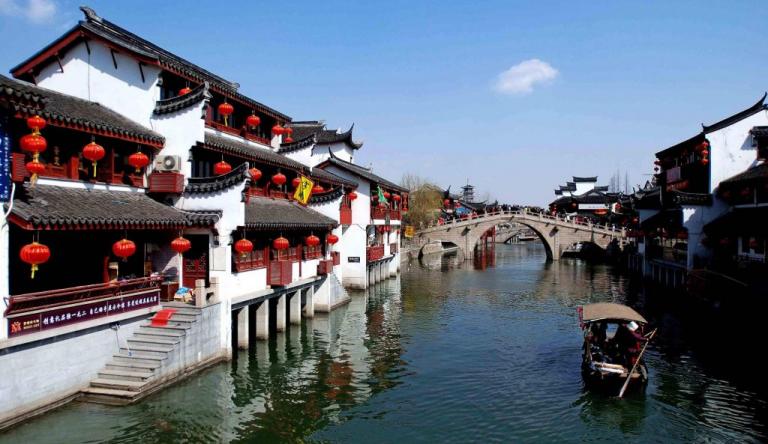
The most common fruits were the peach, plum and the berry known as jujube. Peaches were indigenous and did not come as some would claim from Persia. They were often used in ceremonial rituals. Pears, apricots and melons were other common fruits and would have been sold from boats, often to buyers leaning out of the window above the Wuzhen waterways.
Animals were divided into categories with cattle, sheep and pigs, the trio of animals known as’ The Three Sheng, being viewed as the most valuable.
They were used in offerings to appease the Gods. Priests of the Shang or Zhou generally prepared oracle bones from sheep or cattle. Horses and cattle were usually seen as assistants in the task of agriculture, making beef a rarity. Most families raised their own pig alongside chickens; both animals are cheap to feed. This was also a feature of Western society until the twentieth century, as Thomas Hardy makes eloquently clear in the opening passages of his novel Judethe Obscure where Jude and Arabella argue over the correct way to slaughter a pig. In consequence pork has always been the most commonly eaten meat in China and England. The diet of Wuzhen people was well balanced with plenty of vegetables. In comparison the diet of wealthy English people at the time of its Plantagenet kings, who ruled whilst the Yuan ruled China, was heavily skewed to meat.
The diet between rich and poor varied of course but it varied most in its preparation, quantity and quality rather than its content. When famine or unrest permitted, the poor ate the same food as the rich. Certainly there was no equivalent of the English sumptuary laws which actually restricted the food the poor could eat. These English laws proved unenforceable and faded away in the early 1600s. However, there is in England a strange residue of these restrictions.
With one exception, only the English royal family may eat the flesh of a swan.
The exception to this rule happens to be one of the Cambridge University colleges, St John’s. This is rather a charming reminder of the restrictions imposed on the English if not the Chinese. The people of Wuzhen would generally have eaten three meals a day, possibly three and a half if they had risen particularly early. The key ingredients of diet were rice and fish. Soup was eaten in the morning, followed by two meals of rice and fish. Fish in ancient China were seen as a symbol of wealth; ian Nian You Yu or “May your year be full of fish’ was a favourite greeting at the New Year. Fish is particularly important in the Chinese diet and Wuzhen was particularly blessed with this food.
Most peasants in Wuzhen would have relished eating their pig and, as in England in the past, would only have wasted its squeal’. Every body part reached the dining plate in some form. Unlike the English, the Chinese of course have never laid aside this approach. This leaves the Englishman abroad in China to worry over consumption of a pig ear, of a piece of stomach lining, a trotter, or a few feet of intestine. Careless but doubtless accurate marketing usually translates the pig’s intestine into English on the menu as ‘ Grilled Pig’s Rectum’. Such parts of a pig would have been an essential part of the Wuzhen winter diet.
Pigs were part of the recycling system, almost a fertiliser factory on fourlegs. The occasional pig, because they are renowned escapologists, would once have wandered down the alleyways foraging amongst the waste and thereby posibly reducing the rubbish which night refuse barges collected, and indeed still collect in modern Wuzhen. Asian pig breeds such as the Kune Kune and Taihu are particularly placid in human company and easily domesticated because of their long social interaction with humans. The commonest breed in Zhejiang, and so Wuzhen, was the Jinhua, largely pink but with a dark head and rear. This was a name given to the ham by the tenth century Southern Song Emperor Taizu. Even though three million Jinhua hams, speciality of the Jinhua area,200 kilometres away from Wuzhen, are sold annually it and such breeds specialists have been replaced by the White pig, which far from being familiar with humans barely sees daylight. In another modest cultural link between China and England, the Chinese White was imported by English farmers to improve its breeding lines in the 1800s.
Pigs have always signalled prosperity, even fertility, and been celebrated in poems, stories and songs. Wild boars were probably domesticated 10,000 yearsago and in the Chinese zodiac represent diligence, sympathy and generosity.
Miniature clay models of pigs are the most often found animal in imperial mausoleums. In another example of the links between food and ritual, it is meatfrom the slaughtered pig that is offered on Autumnal Double-Nine Day Festival (the ninth day of the ninth lunar month).
The five grains, referred to in the poem of Chu, are still instantly recitable by modern Chinese: rice, millet, barley, wheat, edible hemp. Although each would have been grown near Wuzhen, rice was the grain they consumed most.
Indeed rice would have been the main food as meat was more commonly consumed in regions where population density was low and grazing land plentiful. In high density areas like Wuzhen grains and root vegetables dominated the diet. This is one reason why vegetables in China are so much more enjoyable to eat than in the West. From the first time when the vegetable wok was rubbed with pig grease to add flavour up to the modern skill of mixing herbs with oils Chinese vegetables generally taste far better than they do in England. Westerners struggling with their vegetarian diet could do worse than seek out Chinese restaurants. In fact this may already be occurring as in 2105 the research company Mintel found that seventy-eight per cent of Britons had eaten Chinese food at home in the last three months, compared with seventy-four per cent eating Indian food. The British are commendably flexible in their eating habits, or perhaps they are simply desperate to escape their own cooking heritage. Another incidental impact of rice specialisation in southern China was the development of irrigation skills through the need to tame the mountain springs whose water was channelled across flat land into their canals and dykes.
Wuzhen eating tables usually differ between home and restaurant. In homes they are rectangular, in the restaurant round. Meal times, and Confucius recommended three a day at punctual times, were always earlier than those in the West.A generation ago in England mealtime punctuality was similarly important with lunch at 1 pm, tea at 4 pm and so on. Suitably for those doing hard agricultural work the morning meal was very important. Even today the Chinese will eat their evening meal at 5:30 or 6 pm which makes more sense than the unhealthy predilection amongst the English bourgeoisie for eating a heavy meal shortly before retiring to bed. The Chinese pay more attention to how and when food is consumed than many other societies.
The round tables and the taking of food from shared plates reflect the Chinese view that eating is a communal activity and that the sharing of food produces a bond between the eaters. Some Chinese must now question the durability of such customs under the assault of American fast food. There were over 5,000 KFC restaurants in China in 2015, most of them down the east coast. However, the traditional Chinese approach to eating is attractive and isone which survives even when a Western visitor to an east coast city of China is humoured through the suggestion of eating Western’. The pizza ordered by the Western visitor will not be all his own. The Chinese friends will expect some of its slices and of course will want to share portions of their fish and chips in return. This half-way cultural meeting point can be rather charming. Eating “Western’ in Wuzhen has never been an option. Before the arrival of fast food the only person who ate his own food on his own in China was a man living alone in abject poverty.
Wuzhen food has reflected the local cuisine which is known as Jiangnan. Its cuisine was crafted from the period of peace during the Sui and Tang dynasties.
Hangzhou and its hinterland which included Wuzhen then had the wealth and leisure to focus on developing a cuisine that fitted its cultural framework. The development of a style of cooking has always required wealth and civilisation.
Both they and the raw ingredients were in plentiful supply in this appealing part of China.
As everywhere in the world, China’s eight cuisines are named after territories. They are distinguished by colour, smell and taste. The meaningassociated with shape and the nutritional value of served food also adds dimensions which are far less established in the West. The local /iangnan cuisine, though not one of the renowned eight national chinesese is, well known. Here Jiangnan is the loose geographical term for northern Zhejiang as well as the lands immediately to the north of the Yangtze delta in Jiangsu province. In simpler terms this food territory spreads north and south of Shanghai. Wuzhen is at its centre. To a country like England which has only recently expanded the sum of its knowledge about Chinese food from Cantonese to include Sichuan and Beijing, Jiangnan remains little known. Neither does it excite many of those in China who live outside its boundaries. It is perhaps waiting to be discovered’. However, needless to add the indigenes themselves are passionate about its tastes, its foibles, its variety. It is a relatively simple cuisine. The food is known for being gentle, ging dan, which could also be disrespectfully translated as bland if the critic comes from Sichuan. It is based on fish and pork plus for example wild rice stems, lily bugs and chick peas grown in water. Huake sheep and duck seasoned with soy sauce are other specialties. People from each region of China are naturally proud of their cooking and some obviously embrace the food of other parts of China. It is not uncommon to hear a native of Beijing articulate their dislike of visiting, for example, Hangzhou. After decrying the character of local people, their probity in business matters and the difficulties in understanding their badly spoken Chinese, the northerner’s diatribe might nonetheless finish with a compliment about the local dishes. Food is central to the Chinese. The English have a number of virtues but producing interesting food has not been numbered amongst them.
Soy sauce has been made in China for 2,000 years. It is made from a fermented paste of boiled soybean and roasted grain. The Chinese believe it relaxes and cools the body. It was also used as a cheap alternative to salt, which everywhere was an expensive commodiry until the nineteenth century. Indeed salt is applied collectively to food in the Chinese kitchen and rarely individually through the salt cellar found on the Western table. Soy, salt and different treatments of meat were used as preservative. Chinese food preservation skills were particularly advanced at an early stage, driven, it is suggested, by the need to feed soldiers during frequent military campaigning over long distances; air dried Jinhua ham from Zhejiang may well have been first developed with this intent. Marco Polo commented on the quality of the ham and also wrote at length about Hangzhou’s food markets. He described ten market places, in eachof which 40,000 to 50,000 people would gather three times per week. He wrote of one that there are always an abundance of victuals… as many ducks and geese as can be told… vast quantities of fish brought upstream from the ocean .. seeing the quantity on sale you would imagine it could never be disposed of”.
Polo reports nonetheless that the market was cleared of food by the day’s end.
This is the food the people of Wuzhen would have eaten in good times. The importance of food to this European traveler from the past was as apparent as it is to the modern traveller.
Where in China the soy sauce originated is not known but Wuzhen has a claim to a share of its history. The town’s Xuchang Paste Company was set up by Tao Xuchang in 1859. The company continues to trade from the town. Its black vats, known as jianggang, of fermenting sauce mature in regimented rows and appear rather like the kettle drums of a music orchestra. There are otherspecialities the enthusiast for Jiangnan food in Wuzhen would wish to share.
There is griddle cooked pork intestine, the head and the body of the Lian Yu or the silver head fish, carpi Yu in pinyin), cooked in a casserole with bamboo shoots and soybean. There is steamed seabass, and another delicacy known as Ziye Yipinxian, which mixes carp and mutton. The Beggar’s Chicken, based on a Hangzhou story about a thief, is another dish regularly on offer.
It was the attraction of the food served in Wuzhen that the fourth-century Chinese official, Zhang Han, craved. His love for water shield soup’ and other local delicacies drove him to homesickness and then retirement back to southern Jiangnan. The food of Wuzhen evidently has its attractions. The phrase in pinyin chun lu zhi si, meaning to think of the perch and water shield’, has eversince signified homesickness; this is another example of the prevalence of food analogies and the worth of Wuzhen food.
It should not be surprising that this attention to food with its central place in their culture has led to the outstanding quality of Chinese food. In the canteens of universities, for example, there is the broadest choice of food which is also cheap, plentiful and good. The typical fare for students at English universities is of appalling quality. Fast food opportunities and food scandals aside, Chinese food is healthier than much of the typical food consumed in the West. Over a few weeks in Wuzhen the Western visitor may both eat their fill and lose significant amounts of weight. The combination of different foods, the manner in which they are cooked, the times of day eaten, the reduced amount of alcohol, are healthy. Food has been so long at the centre of Chinas culture that it throws light on its past. The links of both the arts and medicine to food are intimate. As with the beautiful poem ‘ Da Zhao’ quoted earlier, knowledge of Chinese culture often comes through poetry written about food. Shakespeare makes poetic reference to gluttony, music and love but there is not much culinary detail from him or any other English poet.
English poets rarely write about food. Neither do their artists often paint prepared food at mealtimes. There are famous paintings of meals stretching back to Raphael’s Last Supper but such food as is featured seems incidental. Incontrast, great Chinese paintings frequently feature eating; one famous painting is An Elegant Party, attributed to the aesthete Emperor Huizong of the Song.
This was an emperor who travelled around the Wuzhen area. Other paintings like the Qingming Shanghe Tu during the Song dynasty focus on both food shops in the capital and restaurants at Bianjing (modern-day Kaifeng). It was also in this period of the early 1100s that the transition from sitting on the floor to using tables and chairs was made. This is clear from the almost four-meter-long painting The Night Revels of Han Zaixi by Gu Hongzhong. In comparison an Englishman is not likely to observe much beyond the occasional biblical apple or a pomegranate in the paintings of their painting masters.
There are no records of ancient restaurants in Wuzhen but eating out became popular during the Song, whose southern capital was but seventy kilometres away. There were fashionable restaurants there known as the White Kitchen on An-chou Alley in the Western Precinct, the House of Li’s Blessing inChick’s Alley and Pavilion of Lengthy Blessings by the east wall by the Ching-ying palace. The poor of Wuzhen would eat out, as they still do, in what were then called Labourer’s shops -one was known as Chang’s & Cheng’s and had upward of 50 ovens. The indigent of modern China, such as students, eat out very cheaply in small restaurants near their universities in a manner and frequency never seen in England. The English eat far more often both on their own and with guests in their homes.
Despite the three hundred million or so who have left the land in the last forty years,a far higher percentage of Chinese people work in agriculture thanis the case in the West. It is to the country that virtually all Chinese prefer to return for their Lunar New Year celebrations. The country still offers the favourite local foods and valued connections to the extended family. As future generations will soon know little other than living in city tower blocks in which they were born, such rural connections must surely weaken. This will be sad. However, for the moment food traditions based on farming culture in the countryside will remain strong so that whether it is the town of Wuzhen, the province of Zhejiang, or northern or southern China, eating will remain a remarkable experience. It adds to the pleasure of every Wuzhen visitor that the Chinese are amongst the people most preoccupied with food on earth.
Great cuisine is the outcome of the importance the Chinese attach to the pleasure of consuming food. There is even a Kitchen God, Zao /un, who visitsevery hearth shortly before the Lunar New Year at the time of the Kitchen Festival, Xiaonian. The God sends a report on the activities of every householdto the Jade Emperor, Yu Huang, one of the Three Pure Ones in the Taoist faith.
Proper conduct secures this God’s protection. The English must struggle on without such divine support for their cuisine. It has only a few self-appointed ‘ Domestic Goddesses’ who are merely overpaid twenty-first-century television cooks. They have never thought to attach such religious mystery to affairs of the kitchen in the manner of the Chinese. Perhaps this has been their error. So absent was concern with the quality of food in England that even the very word cuisine had to be borrowed from the French language. Indeed it is claimed that the French interest in food dates from their 1789 revolution which permitted its enjoyment across a much broader cross-section of society. The base of Chinas own society broadened during the enlightened Song dynasty from 960 to 1279. This was a period renowned for its food quality, particularlywhen their capital was nearby to Wuzhen in Hangzhou, as well as other culturalachievements. It is intriguing to consider that the origins of a great cuisine might just be related to political and social structure and be one shared between France and China.
Whatever the source, the region of Wuzhen has long been a place of culinary excellence in China. Famines there were rare, food supply increasedthrough technical developments in agriculture and sophisticated commercial developments provided supportive finance. When officials fled the north they brought northern chefs with them, as they had done when they joined the southern Song court. The Grand Canal helped expand food horizons; it brought food variety and sustained specialised food markets. Methods of preserving food, of fish for example, improved. In the opinion of many these events during the Song dynasty turned the /iangnan food of southern China into a world-class cuisine. It is served in Wuzhen and many think it amongst the finest in the world. Indeed it could have been about Wuzhen that the poet Qu Yuan wrote:O Soul come back! Choice things are spread before you’.
